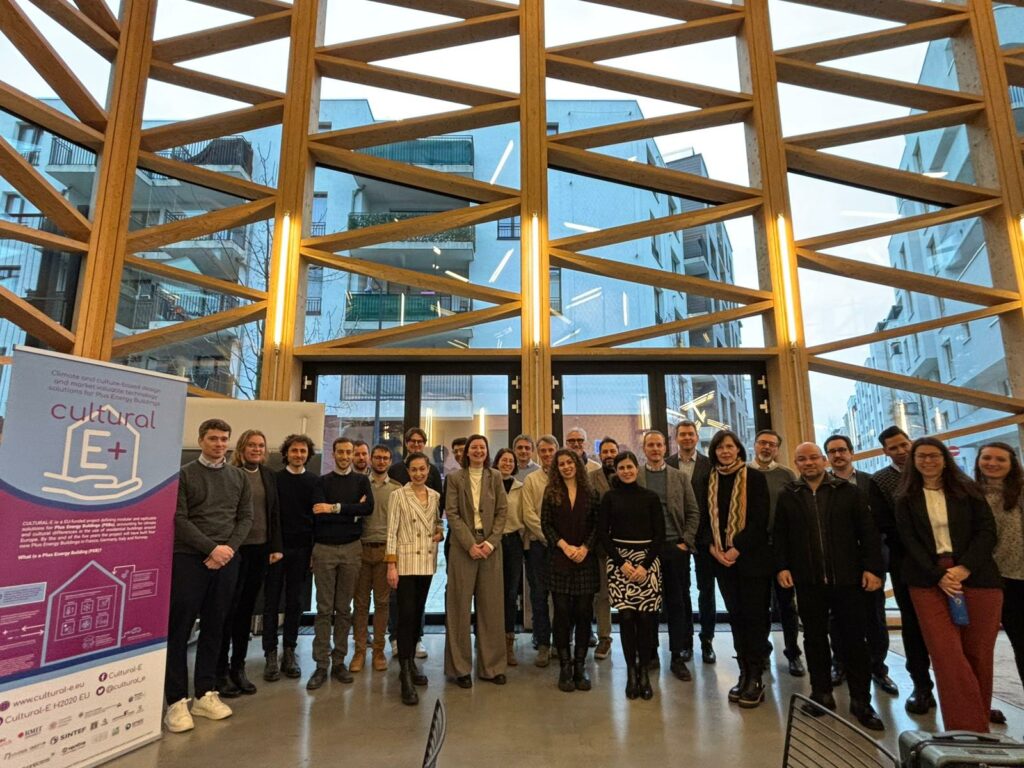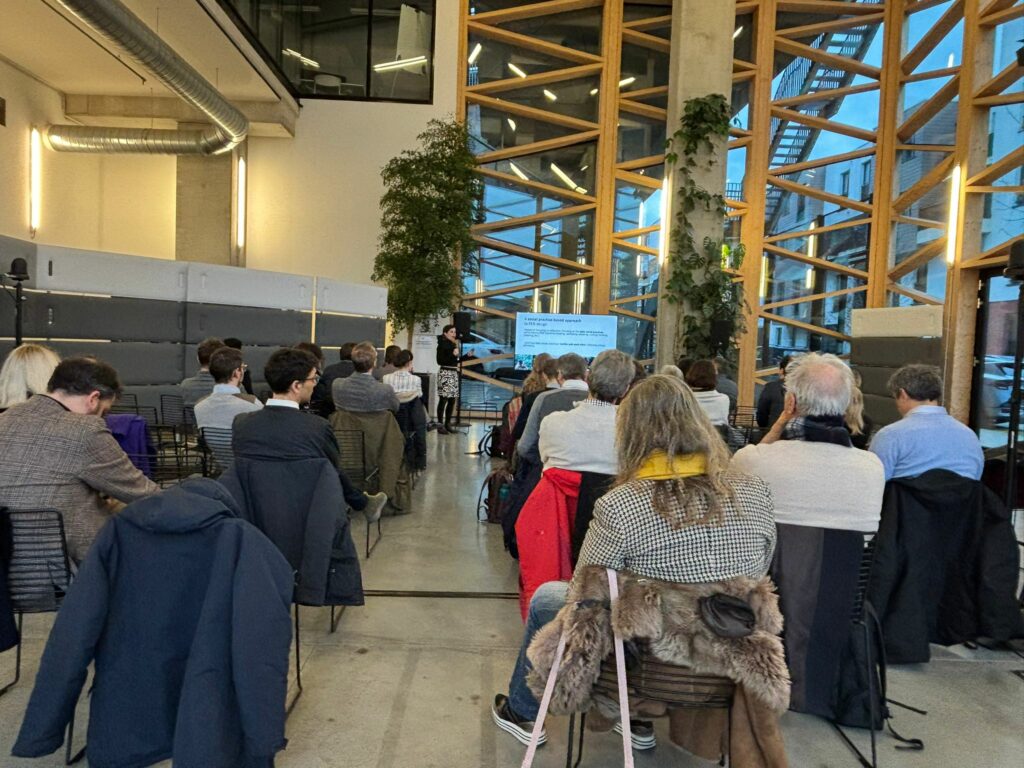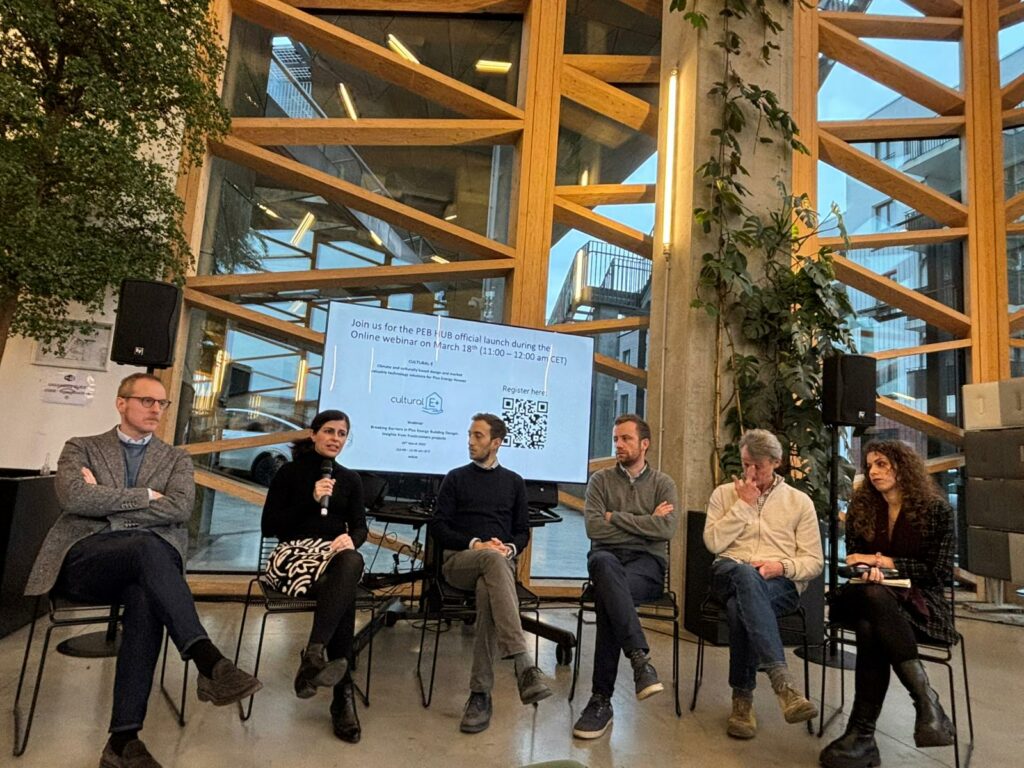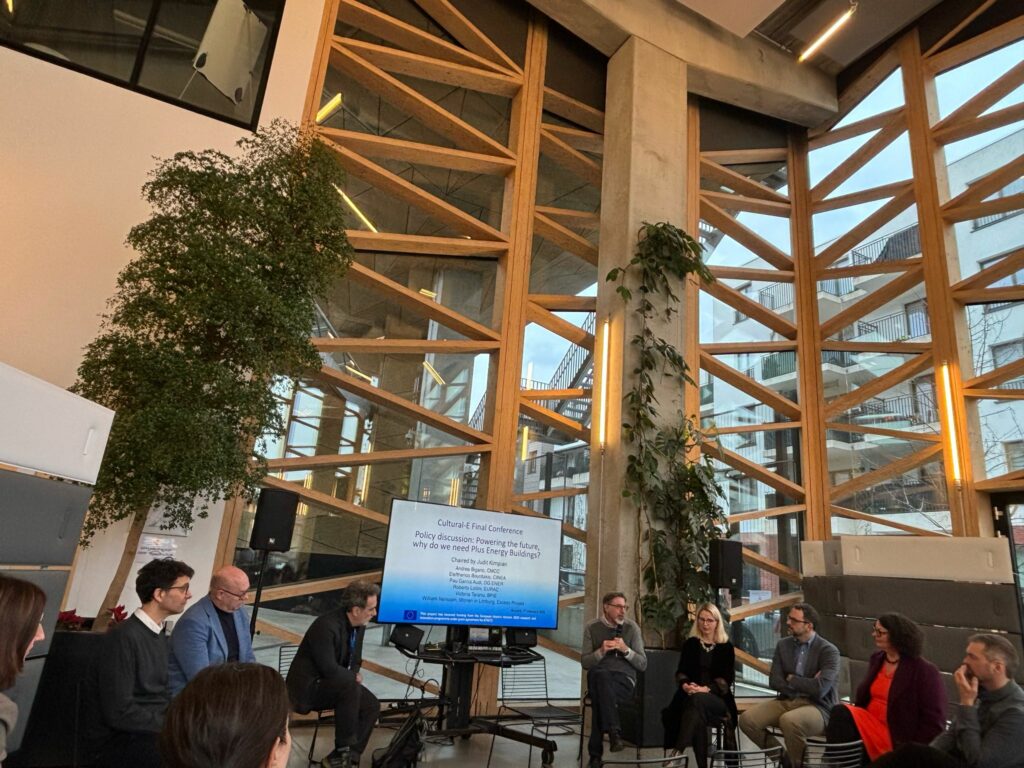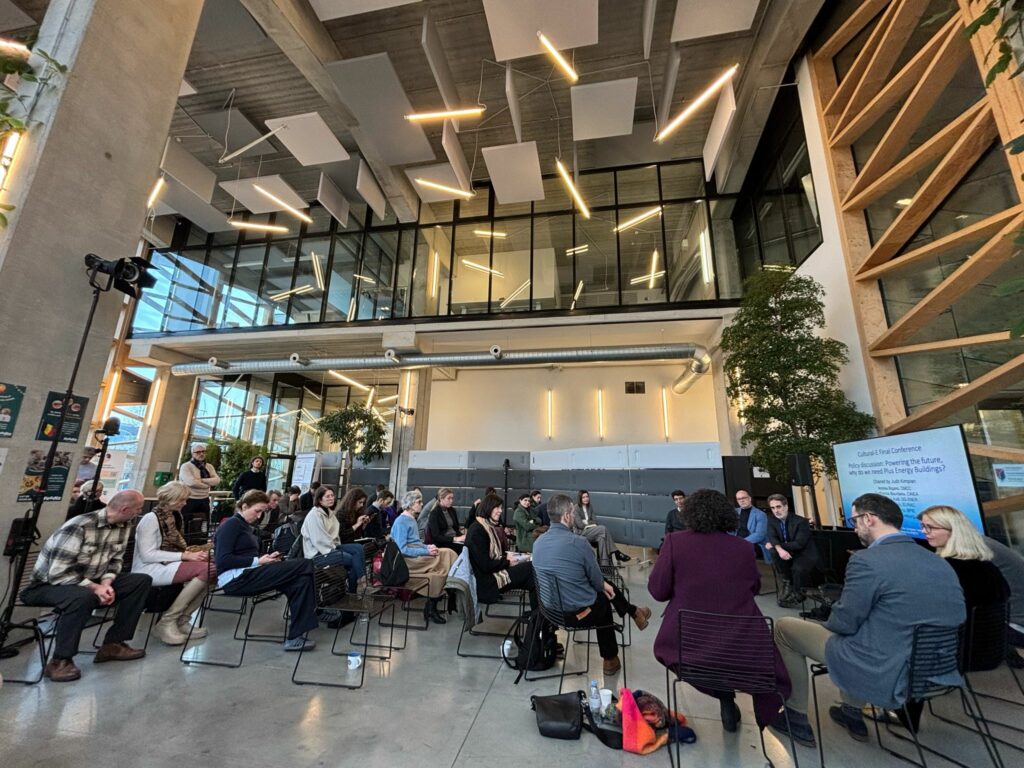The CULTURAL-E project recently hit a big milestone with its Final Conference, held on February 7, 2025, at Greenbizz in Brussels, Belgium. This event marked the end of years of dedicated research and teamwork towards the development of solutions for Plus Energy Buildings (PEB). The event was organized and promoted by the Architects’ Council of Europe (ACE – CAE).
The project coordinator Annamaria Belleri from Eurac Research shared valuable insights on the design guidelines for Plus Energy Buildings and Beatriz Pineda from RMIT Europe introduced the PEB HUB repository.
A panel discussion featured scientific project partners including Wilmer Pasut from the Ca Foscari University of Venice, Roberta Di Bari from the University of Stuttgart, Francesco Isaia from Eurac Research, Hermann Leis from SIZ Energieplus, Antoine Dugue from Nobatek/INEF4, and Beatriz Pineda from RMIT Europe. The discussion focused on the design challenges and opportunities for Plus Energy Buildings.
The final conference of CULTURAL-E highlighted several key takeaways in the field of sustainable housing and Energy Buildings (PEBs). Firstly, adopting a social-practice approach is essential to understand and design for residents’ needs, ensuring that technologies align with their everyday practices. The integration of technologies, such as heat recovery systems, efficient windows, and decentralized heat pumps, plays a crucial role, though there are challenges in achieving technical and architectural integration.
Optimizing building performance requires tailored solutions based on climate and cultural contexts, with data-driven models supporting informed decisions. Economic viability of PEBs can be challenging due to dynamic market conditions and varying subsidies, with an initial investment cost higher than that of Net Zero Energy Buildings (nZEBs). However, PEBs offer long-term economic benefits in some countries through reduced energy costs.
From an environmental perspective, centralised systems tend to perform better, and while PV systems contribute to embodied impacts, they provide substantial renewable energy credits over time. Overall, the conference emphasised a holistic approach to PEB design, integrating social practices, advanced technologies, economic considerations, and environmental sustainability to create adaptable, energy-efficient, and comfortable living environments.
The pitch session showcased Cultural-E innovative technologies:
- The cloud-based house management system, developed by Advanticsys
- The decentralised packed heat pump system, developed by Ventive in collaboration with Brunel University
- The Active Window System, developed by Eurofinestra in collaboration with Eurac Research
- The smart air movement system, developed by Vortice in collaboration with Eurac Research and Ca Foscari University of Venice
and the demonstration buildings:
The afternoon policy session, titled “Powering the future, why do we need Plus Energy Buildings?” featured a round table discussion that included, Eleftherios Bourdakis from CINEA and Pau Garcia Audi from DG ENER, Andrea Bigano from Euro-Mediterranean Center on Climate Change, Roberto Lollini from EURAC, Victoria Taranu from BPIE and our sister project syn.ikia and William Nelissen from Wonen in Limburg and our sister project Excess. The session has been moderated by Judith Kimpian, chair of the Sustainable Architecture Working Group at the Architects’ Council of Europe. What emerged from the discussion are three main takeaways:
- The need of a better legal framework for trading of energy surplus.
- The importance of the disclosure of building energy performance data, that should become a standard practice in projects and how the common metrics can support this process.
- The crucial role of occupants’ feedback for future improvements: architects and all professionals as well as policy makers should work more closely with people to address the day-by-day challenges on the ground.
Did you miss the event? You can find the recordings on our YouTube Channel!
You can also find downloadable link of the full presentation here.
Are you a professional working with Plus Energy Buildings? Join our PEB HUB, the Plus Energy Building (PEB) repository and the online community powered by PEB professionals.

